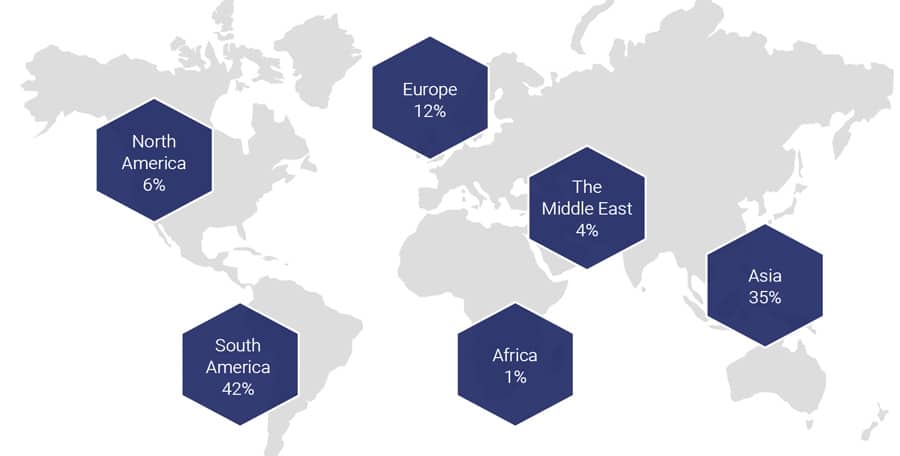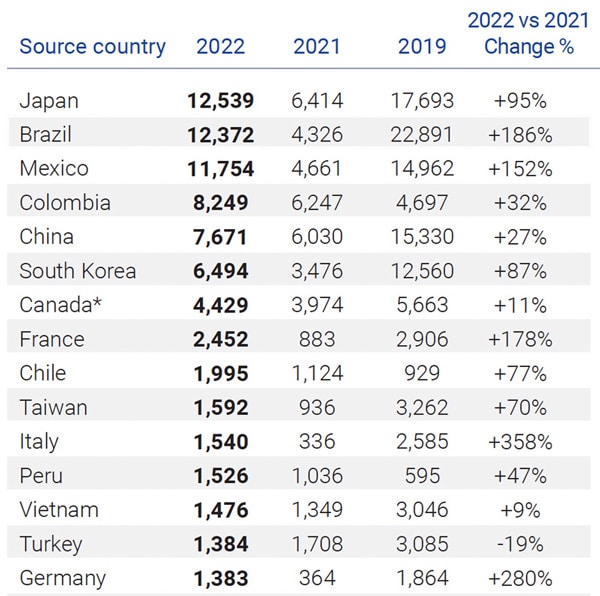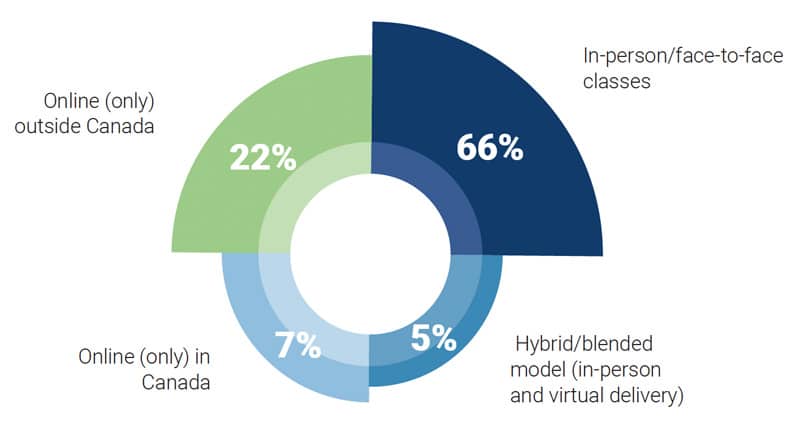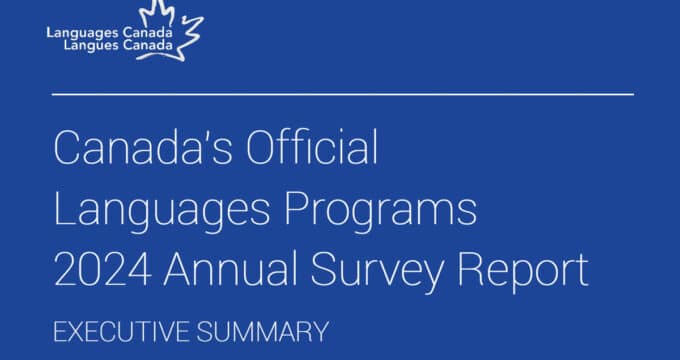Canada’s language training sector rebounded in 2022 but growth hampered by visa delays
- Moving from a pandemic-fuelled low in 2021, Canada’s language training centres reported 70% growth in international students numbers last year — and a 52% increase in student weeks
- Sector performance was, however, severely hampered by a persistent backlog in visa processing which led thousands of students to cancel their plans for language studies in Canada
Member centres of Languages Canada have reported a total enrolment of 97,679 students for 2022, with those students spending 1,098,558 weeks studying English or French in Canada.
That represents 70% growth in student numbers, and 52% in weeks, compared to 2021. Even with that impressive growth, the recovery is uneven between public and private language centres, as Languages Canada explains: "At the end of 2022, the public sector had recovered 40% of its pre-pandemic student numbers and 40% of student weeks, while the private sector had recovered 73% of student numbers and 89% of student weeks."

The Languages Canada report also makes clear, however, that 2022's recovery could have been far greater still, if not for a well-documented backlog in visa processing that saw many students postpone or cancel their study plans last year.
"Canada’s language education sector was poised to skyrocket in 2022," says Languages Canada Executive Director Gonzalo Peralta. "We don’t have specific numbers, but it is safe to estimate a 30% loss of registered students. Not potential registrations - registered and refunded students…Nobody expected that visas would be backlogged to the extent they were, and the consequences were disastrous."
The Languages Canada report for 2022 conservatively estimates that roughly 10,000 students were unable to enter Canada for language studies due to visa delays. As the preceding quote indicates, however, the real number is likely to have been considerably higher.
Speaking to ICEF Monitor this week, Mr Peralta adds of the current outlook, "Although the visa backlog began in the latter part of 2022 and has improved dramatically due to government allocation of additional resources, it definitely impacted 2023 numbers as well. The reality is that Canada needs to modernise processing and tracking, as [Canadian Immigration Minster Sean Fraser] stated at the Languages Canada conference. We know that applications will not diminish, we know that language and education are important elements in the immigration ecosystem – we simply need a better and modern system to support Canadian objectives and ensure students are well cared for."
Where are students coming from?
Just over four in ten language students in Canada in 2022 came from Latin America, with another 35% travelling from Asia, and 12% from Europe.

As we see in the table below, Japan remains, by a slim margin, the leading source of language students for Canadian centres, followed by Brazil, Mexico, and Colombia. China (5th), South Korea (6th) and Taiwan (10th) remain the leading senders from Asia.

What are they studying, and how?
General English and French courses remain far and away the most popular option for visiting language students, and accounted for nearly two-thirds (65%) of all enrolments. Roughly a fifth of all students (17%) were enrolled in pathway programmes, and another 10% in English or French for Academic Purposes.
Online and hybrid delivery continued to play a significant role for Canadian language centres in 2022. While nearly two-thirds of all students were enrolled in face-to-face programmes during the year (up from 29% in 2021), 29% pursued their language studies online and another 5% were enrolled in hybrid programmes.

Agents a key channel
The report highlights as well the important role that education agents play in the Canadian language sector: "Education agencies represent the largest booking channel for Languages Canada members and generated 66% of all bookings in 2022. The ratio of students enrolled through agencies grew from 59% in 2019.
Compared to pre-pandemic trends in booking sources, the overall proportion of students enrolled directly decreased from 31% in 2019 to 22% in 2022."
For additional background, please see:


















